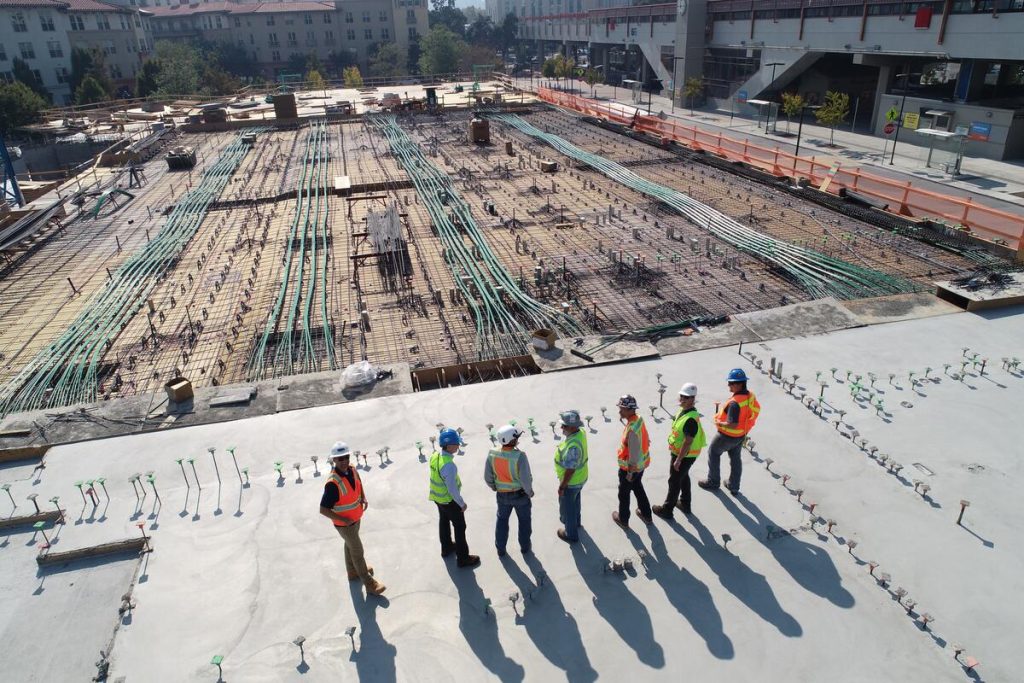Concrete floors are a popular choice for many homeowners because of their durability and low maintenance. However, suppose you plan to install a non-breathing floor surface like vinyl tiles. In that case, it is essential to properly prepare the concrete to mitigate moisture. This article will discuss the steps you need to take to ensure that your concrete floor is ready for any type of non-breathing floor surface.
Types of Non-Breathing Concrete Floor Surfaces
A “breathing” surface like exposed concrete is porous and allows moisture to evaporate. The drawbacks of a breathing surface are that it can be damaged by water and is more difficult to clean. Non-breathing floor surfaces do not allow moisture to pass through them. The main benefit of non-breathing floor surfaces is that they are easier to clean and maintain.
There are several types of non-breathing floor surfaces, such as:
- Vinyl tiles
- Linoleum
- Ceramic tiles
- Rubber flooring
- Laminate floors
However, these non-breathing floor surfaces can be susceptible to mold and mildew or damage from moisture if they are not installed over a properly prepared concrete floor.
What is the ASTM Standard?
The American Society for Testing and Materials, known as ASTM International, develops standards, specifications, practices, guides, and test methods drawn up by global experts from various industries. It has an ASTM F3010 standard now on its 2018 iteration, specifically providing guidance on installing non-breathing floor surfaces on concrete slabs. This standard includes a section on preparing the concrete surface, essential to preventing moisture problems. The section on concrete preparation consists of the following requirements:
- The surface must be clean and without any loose material.
- The surface must be dry before installation.
- The surface must be level and smooth.
- The surface must be free of defects that could allow moisture to penetrate.
Here are the specific steps recommended by ASTM to prepare concrete floors according to its standards.
Ensuring a Clean Concrete Surface
The first step is to clean the surface of all dirt, grease, oil, curing compounds, waxes, or other foreign material that could inhibit adhesion. The easiest way to do this is to pressure wash the surface with a degreaser. You may also need a putty knife or wire brush to remove any stubborn dirt or debris.
Also, remove all loose materials, such as peeling paint. These loose materials can trap moisture and cause problems with the new flooring. You remove loose materials through shot blasting, grinding, or a process called “scarification.” This can be done with a scarifier.

Ensuring a Dry Concrete Surface
Once the surface is clean, it must be completely dry before proceeding to the next step. If the surface is not completely dry, the new flooring may not adhere properly or could be damaged by moisture. You need to check the moisture level of the concrete.
The easiest way to do this is to tape a 12” by 12” piece of plastic to the floor and wait 24 hours. If there is condensation on the underside of the plastic, the floor is not ready for installation. This is not a very accurate method, though.
The best way to check the concrete’s moisture level is with a calcium chloride test. This test will tell you the relative humidity (RH) of the concrete. The standard requires that the RH be less than 80%. If it is not, you will need to use a mechanical dehumidifier to dry out the concrete.
Achieving a Level and Smooth Surface
The next step is to ensure that the surface is level and smooth. An uneven surface can cause problems with the new flooring, such as tears or wrinkles. A smooth surface is also important for ensuring that the new flooring adheres properly.
There are several ways to level and smoothen an uneven concrete surface.
- Sanding with a hand sander
- Shaving a smooth surface with small imperfections with a handheld power trowel
- Grinding with a handheld a floor grinder for slight unevenness or small imperfections
- Milling with a milling machine that will remove a thin layer of concrete from the uneven and imperfect surface
- Unevenness greater than 1/8 inch must be corrected with a self-leveling compound.
Achieving a Surface Free of Defects
The last step is to ensure that the surface is free of defects that could allow moisture to penetrate. Common defects are delamination, cracks, crazing, honeycombing, holes, or pores. These need to be repaired before installation.
Delamination is when the surface layer of concrete becomes detached from the rest of the slab. This is often caused by improper curing or poor concrete mix. The best way to repair delamination is with a resurfacer.
Honeycombing is when there are voids or pockets in the concrete that extend from the surface to the rebar. These can be caused by poor consolidation of the concrete during placement, using too much water, or finishing too early.
Crazing is a network of fine cracks on the surface of the concrete that does not extend through the entire thickness of the concrete. Crazing can be caused by drying too quickly, excessive finishing, or using deicing salts.
Cracks or holes greater than 1/8 inch must be filled with an epoxy resin before resurfacing with a Portland cement-based topping. First, the crack must be cleaned out and then filled with the resin. The resin will fill the void and bond to the concrete, creating a water-tight seal.
Smaller cracks can be filled with a polyurethane sealant. For small holes or pores, you can use a self-leveling concrete patching compound.
Get a Perfect Floor
Now that you know the steps necessary to prepare your concrete surface for vinyl tiles, you can ensure that your floor will be perfect. By following these simple steps, you can avoid moisture damage and achieve a smooth, level surface ready for installation.

